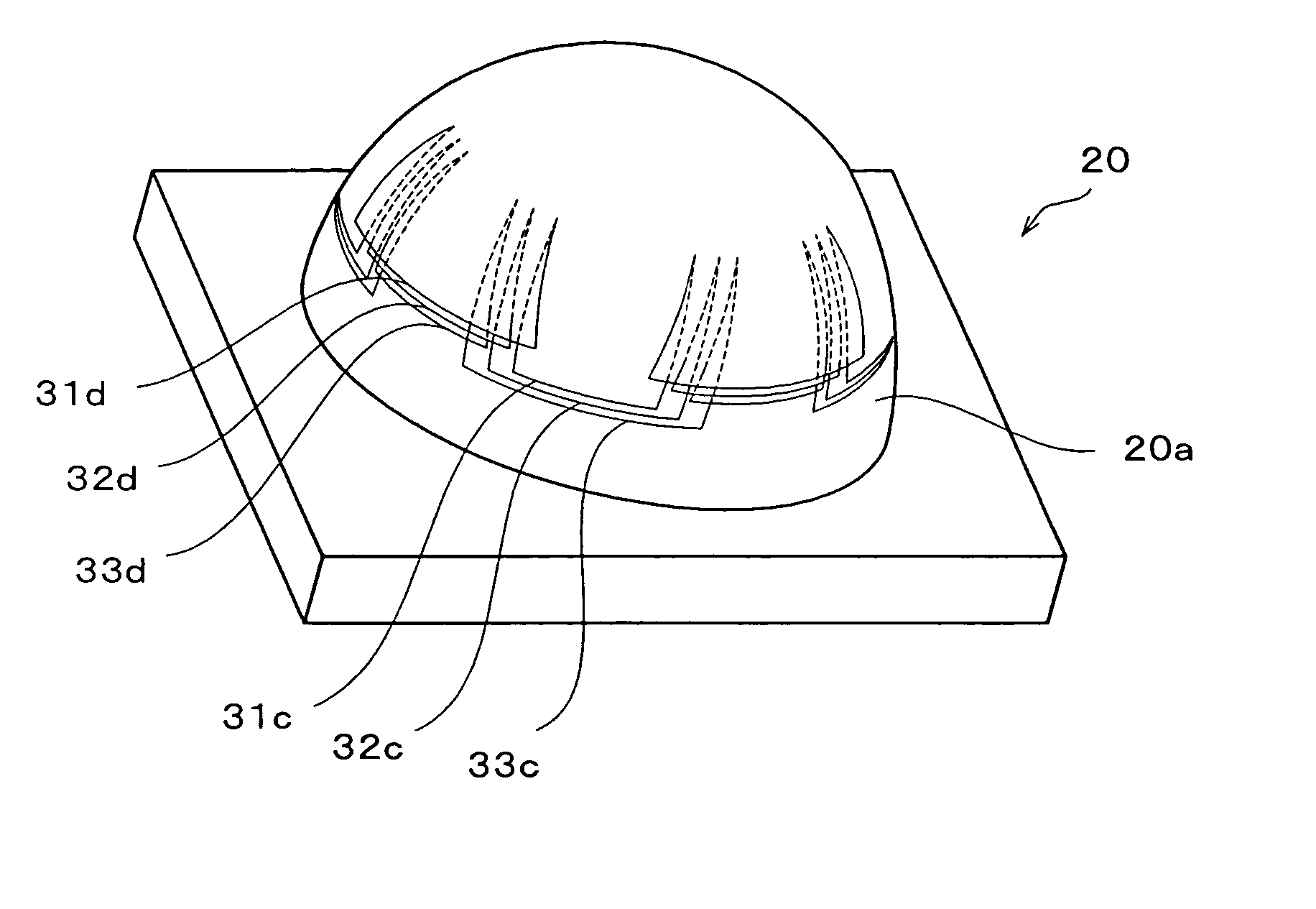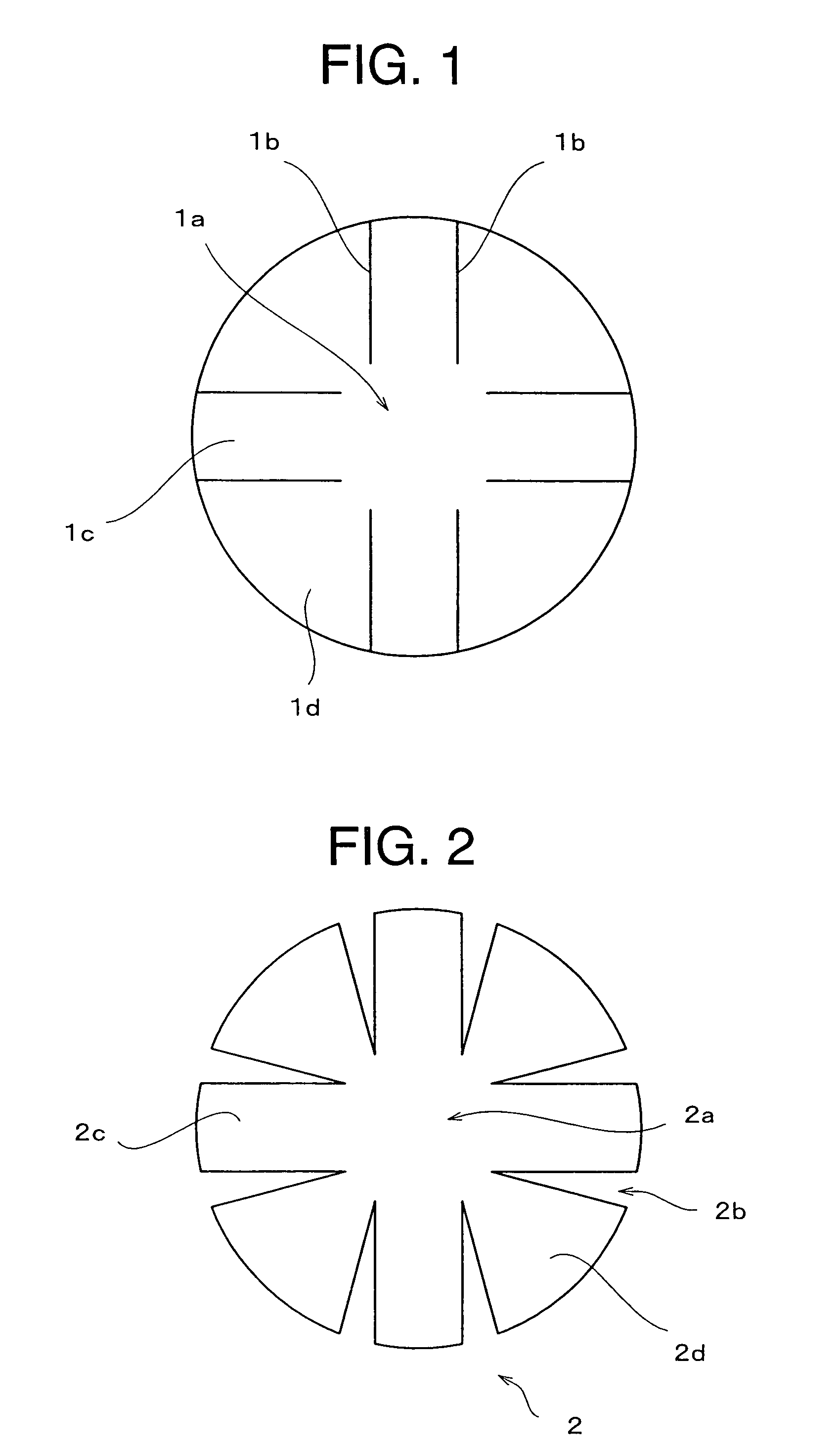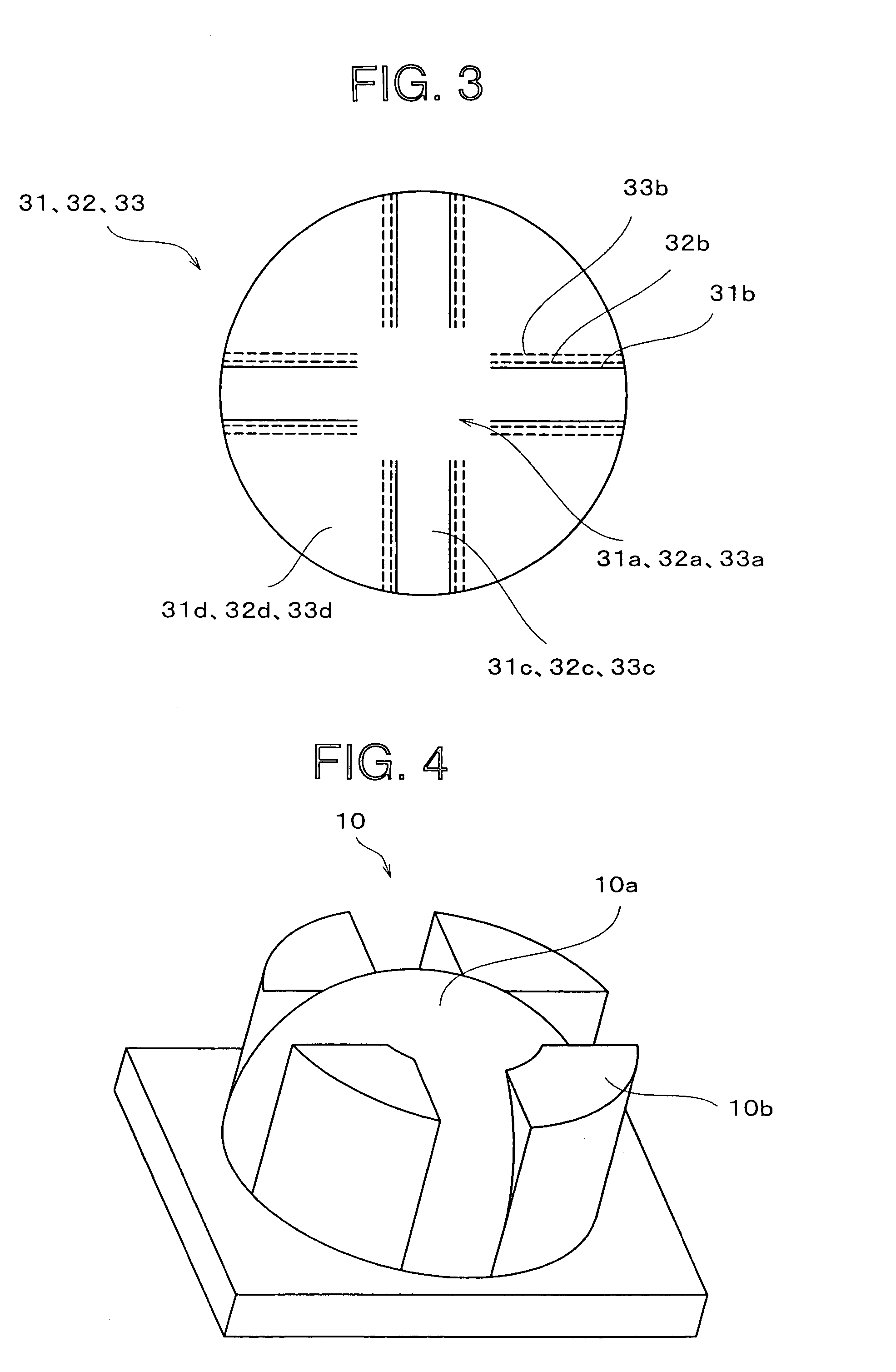Method of producing formed product of fiber-reinforced composite material and the formed product
a fiber-reinforced composite material and three-dimensional molding technology, which is applied in the field of three-dimensional molding articles of fiber-reinforced composite materials, can solve the problems of unsatisfactory uniformity and productivity, insufficient stability of molded articles, and disordered arrangement of reinforcing fibers, so as to improve handling ease and flexibility, the effect of improving the dispersion
- Summary
- Abstract
- Description
- Claims
- Application Information
AI Technical Summary
Benefits of technology
Problems solved by technology
Method used
Image
Examples
example 1
[0113] The prepreg employed in this example was unidirectional prepreg (carbon fiber content: 56% by volume) having a fiber thickness (areal weight) of 175 g / m2 and a resin content of 35% and obtained by heating and impregnating a unidirectional material comprising carbon fiber in unidirectional arrangement, TR 50S manufactured by Mitsubishi Rayon Co., Ltd., in both sides with an epoxy resin composition obtained by heating and mixing YDPN 701 35 parts by mass, Ep828 59 parts by mass, DICY 4 parts by mass, and DCMU 2 parts by mass and free from sulfur atom. A laminate obtained by layering such unidirectional materials successively in the fiber direction at 0° and in the fiber direction at 90 was used as one constituent unit set of prepreg.
[0114] First, prepreg sets were cut out one by one, and as shown in FIG. 3, three constituent unit sets of prepreg were laminated. The respective prepreg sets 31, 32, and 33 were notched to form the notches 31b, 32b, and 33b in such a manner that t...
example 2
[0118] A preliminarily molded article 41 was obtained in the same manner as in Example 1, except that a material obtained by impregnating a unidirectional material (areal weight: 125 g / m2) comprising carbon fiber TR 50S manufactured by Mitsubishi Rayon Co., Ltd. in unidirectional arrangement with an epoxy resin composition obtained by kneading and making the following composition uniform at 50° C. (resin content: 30%) was used as the prepreg. The sulfur atom content of the epoxy resin composition was 0.77%. [0119] (component A) a molten mixture of Ep828: Ep1001=47: 35 (by mass) 82 parts by mass, [0120] (component B) DDS 6 parts by mass, [0121] (component C) PDMU (average particle diameter: 50 μm) 5 parts by mass, and [0122] (component D) DICY 7 parts by mass.
[0123] The obtained preliminarily molded article was free from wrinkles and fiber disorder, and had good appearance.
[0124] The preliminarily molded article was set in a lower die of dies for compression molding (not shown), wh...
examples 3 to 10
[0125] Preliminarily molded articles and final products were obtained in the same manner as Example 2, except that the epoxy resin compositions shown in Table 1 were used as epoxy resins and the A and component Bs were reacted preliminarily based on the necessity. In any case, the preliminarily molded articles were all free from wrinkles or fiber disorder and had good appearance. The molded articles as final products were also provided with good appearance.
TABLE 1ComponentCompound nameExample 3Example 4Example 5Example 6Example 7Example 8Example 9Example 10Component AEp82886846877(part by mass)Ep8077058Ep60470N74070Component BDDS2420202010(part by mass)BAPS2020Component CPDMU55555(part by mass)DDMU3155Component DDICY77777555(part by mass)AdditivePVFSulfur atom content (% by mass)0.260.522.582.582.581.481.481.29
PUM
| Property | Measurement | Unit |
|---|---|---|
| distance | aaaaa | aaaaa |
| particle diameter | aaaaa | aaaaa |
| molding pressure | aaaaa | aaaaa |
Abstract
Description
Claims
Application Information
 Login to View More
Login to View More - R&D
- Intellectual Property
- Life Sciences
- Materials
- Tech Scout
- Unparalleled Data Quality
- Higher Quality Content
- 60% Fewer Hallucinations
Browse by: Latest US Patents, China's latest patents, Technical Efficacy Thesaurus, Application Domain, Technology Topic, Popular Technical Reports.
© 2025 PatSnap. All rights reserved.Legal|Privacy policy|Modern Slavery Act Transparency Statement|Sitemap|About US| Contact US: help@patsnap.com



